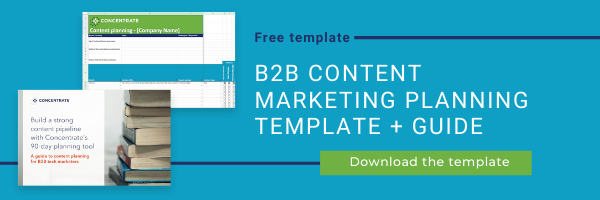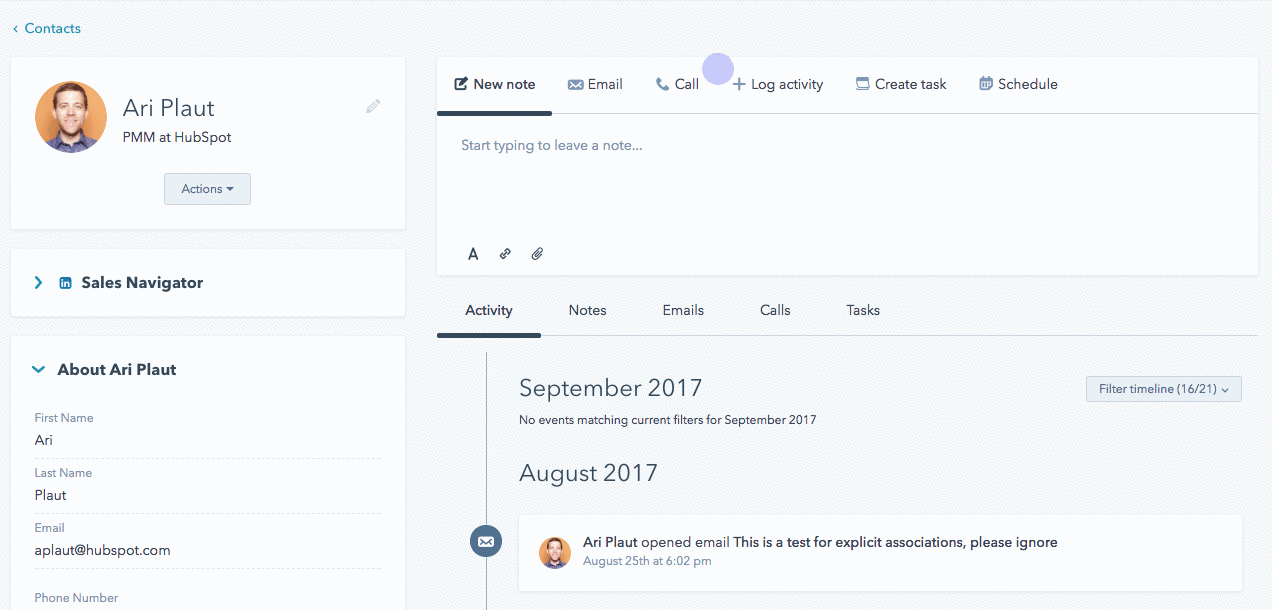What is B2B lead generation?B2B lead generation is the process of attracting potential buyers from your target market to volunteer their contact information so you can start guiding them along their buying journey. |
Your tech won't sell itself
In 2021 it is now rare for technology leaders to think their innovations will simply sell themselves. No matter how brilliant your product, there is an understanding that you need to tell your chosen market about it.
The question then is how to best achieve this? How can you efficiently grow sales for your company?
This is a practical guide to the first part of the process: generating leads. We’ve attempted to answer most of the questions we’ve been asked, but would welcome yours if it’s not addressed below.

- Chapter 1 What is B2B lead generation
- Chapter 2 How do I implement a B2B lead generation programme?
- Chapter 3 How does lead generation work with sales?
- Chapter 4 What is the role of CRM in B2B lead generation?
- Chapter 5 What other technology tools are there to help with lead generation?
- Chapter 6 Is HubSpot good for lead generation?
- Chapter 7 How does content marketing help B2B lead generation?
- Chapter 8 What types of content can I produce?
- Chapter 9 What digital tactics support B2B lead generation?
- Chapter 10 How does my website support B2B lead generation?
- Chapter 11 Can social media help with B2B lead generation?
- Chapter 12 Can I use Google Ads and other online advertising to generate leads?
- Chapter 13 What offline tactics work for B2B lead generation?
- Chapter 14 Is outsourcing a good approach to B2B lead generation?
- Chapter 15 How can I calculate ROI on B2B lead generation spending?
- Chapter 16 What are some tips for B2B lead generation?
What is B2B lead generation?
Wikipedia’s definition is ‘’ . . . the initiation of consumer interest or enquiry into products or services of a business.’’ Necessarily broad, this definition does capture that the definition of a lead can be very broad, but at its core, it is simply someone who has voluntarily indicated some interest in your product.
Leads are not one class of interested people, but a cover-all term for people as they go through a buying process. For B2B technology companies these buying cycles can be long and complex so it makes sense to break down the definition of lead into several stages:
- A ‘raw’ lead: a potential buyer who has voluntarily indicated interest in your product (e.g. converted on a website form, given you a business card at a trade show). They are a new addition to your database, but in no way qualified as a prospect for your business.
- A ‘marketing qualified lead (MQL)’: this is a raw lead that you have been able to qualify as being in your target market (i.e. the right sort of job position and the right sort of company in the right location). They could become a prospect for your business, but you don’t have enough information to determine that.
- A ‘sales qualified lead (SQL)’: the final phase of a lead, where you have determined the person is not only from your target market but has a genuine need that your product can address, has buying authority and wants to purchase relatively soon. They are ready to actually sell to.
The raw leads, MQLs and SQLs form your ‘sales funnel’. Sometimes firms make the mistake of only focussing on SQLs and ignoring the previous stages as not worthy of their effort. To be efficient about your selling however you need to be filling the top of this funnel with your lead generation activities so your sales team have plenty of MQLs to work through when SQLs start to dry up.
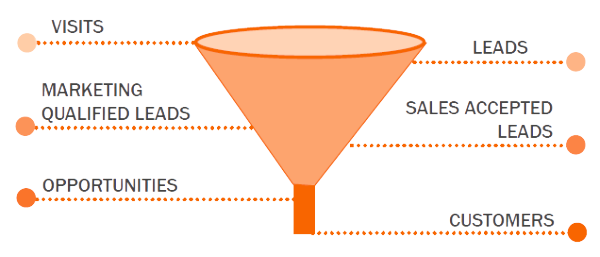 The marketing and sales funnel
The marketing and sales funnel
The other mistake tech firms make is expecting sales to do all of the work to generate raw leads and MQLs. We call it a ‘lone-wolf’ approach, where talented sales people are left to do it all, from finding new prospects right through to signing the deal. Many of them can achieve this, but it’s fundamentally inefficient.
What tech firms need is to focus on repeatable lead-generation programmes that develop potential leads and MQLs and nurture them into SQLs.
How do I implement a B2B lead generation programme?
Like any good structure, a lead generation programme must be built on a solid foundation. Clarity around the following three questions is important before you start investing:
- People: who are selling to? What sort of buyers are you targeting in what sort of companies in what sort of industry or geographical markets? Marketing works by focussing on as small a market as possible to generate profitable business. Marketing to everyone equates to marketing to no-one. You need to understand your target markets, and then the buyer personas within those markets.
- Purpose: what problem are you solving for these people? For example, buyers don’t want your accounting software product, what they do want is to make better decisions about their finances. You need to be focussed on those problems.
- Proposition: if you have a real market to focus on, then there will be many other vendors targeting those customer problems. What you also need is to be able to articulate how you can solve these problems in a unique way. Is your solution the best quality, does it give a faster result, is it cheaper, better supported etc?
With this foundation in place you are ready to build a lead generation plan. This involves building a sustained ‘system’ of generating and nurturing buyer interest, which looks something like this:
The components of this system are:
- Website: this acts as the hub of lead generation activity, where you are trying to drive people to learn about what customer problems you solve and how you do that. A good lead generation website will offer content at different stages of the buying process – helping buyers as they are understanding the nature of their challenge and how to address it (awareness), when they start to understand how your solution could solve their problems (appreciation) and finally turn to evaluating your solution as something to invest in (attraction). Most of this content will be freely available, but a subset must be gated behind landing pages so you can generate the names and email addresses that form your leads.
- Digital attraction: blogging, search engine optimisation, email marketing, online advertising, social media and more are all digital tactics for generating leads, primarily by driving traffic to your website for conversion.
- Offline attraction: trade shows, direct mail, telemarketing and PR are all examples of tactics that aren’t primarily online, but should also be designed to drive traffic to your website for conversion
Two tools are useful for getting your lead generation going.
First is building a 90 day content plan that focusses on producing content for your target buyers. Here’s some examples of the types of content you can produce for different stages of the buying process. What’s critical is having a subset of content (e.g. an eBook or calculator) that is of sufficient interest and value to your target market that they will ‘pay’ for it with their contact details. We call them ‘conversion assets’.
How does lead generation work with sales?
Sales are what drives any tech business, and so your sales team is rightfully is seen as absolutely key. Marketing’s primary job is focus on producing leads for the sales team to work with, so sales people can spend more time on closing qualified opportunities than trying to prospect and cold call.
Too often teams end up talking past each other, with sales not seeing marketing as delivering the right quality of volume of leads, and marketing thinking that the sales team aren’t chasing the opportunities they’ve created efficiently enough.
Ideally, marketing and sales should formally agree their respective roles, even to the extent of agreeing a service level agreement. Marketing agrees what it commits to in terms of the volume and quality of leads on a monthly basis for instance. Sales, in turn, promise to respond to those leads in a certain time frame with the right level of effort.
Along with this alignment between marketing and sales, applying technology is what can really accelerate your lead generation. That starts with a CRM.
Take a listen to the Growing Tech Podcast where Greg and Owen speak to Dan Tyre, HubSpot Employee #6, about his tech sales strategies, and how CRM can support your sales team.
What is the role of CRM in B2B lead generation?
At the heart of your marketing and sales tech is a customer relationship management (CRM) system. It is the repository of all your ‘leads’, from the rawest through to your most loyal customers. It is essential for efficiently driving your B2B marketing lead generation programme.
According to our Market Measures survey, only 16% of New Zealand tech companies don’t use a CRM. Of those that do, HubSpot (25%) is the most common choice, followed by Salesforce and Microsoft Dynamics CRM.
Primarily a CRM helps your track a prospect (i.e. a company and the associated contacts) through the buying process, from SQL through to closed deal. A good CRM also stores all the information about your leads, tracking your interactions with them (e.g. emails sent, meetings booked, calls made) and theirs with you (e.g. website visits, email opens, form completions). It also has a suite of tools to make a sales person’s life easier, whether it’s automated emails, calendar sharing or automated workflows to guide the selling process.
Marketing and sales teams who use technology like CRM effectively, drive growth at five times the rate of those that don’t.
We can support you in migrating across to the HubSpot CRM, and can guide you on your journey towards optimising a more flexible platform.
What other technology tools are there to help with lead generation?
Technology has exploded with all sorts of software applications to make selling your stuff to people easier, faster, better. As the world has become more connected, through their computers, cell phones and even televisions, B2B marketers have an enhanced ability to find and persuade consumers to buy.
While there may be over 7,000 marketing technology products out there at last count, you just need to focus on four categories to drive your lead generation:
Website content management system (CMS)
A tool that a person can use to design, manage, and publish a website.
Marketing automation
Marketing automation refers to the software that exists with the goal of automating marketing actions. Many marketing departments use this to automate repetitive tasks such as emails, social media, and other website actions.
Content promotion
The distribution of content through a variety of media channels. Some channels include social media networks, blogs, email, and live events.
Customer relationship manager (CRM)
Technology to manage and analyse customer interactions and data throughout the customer lifecycle, with the goal of improving business relationships with customers, assisting in customer retention and driving sales.
Once your basic marketing technology systems are in place, you can start to extend your use of them. Marketing automation tools provide features like lead scoring for example, where you can manage a high volume of leads by automatically categorising how valuable they are.
New marketing technology and trends are always emerging, from conversational marketing to the much-hyped concept of artificial intelligence. Many have useful applications but should be considered once you have a strong foundation in place, and are generating a regular volume of leads with a nicely aligned sales and marketing team.
Is HubSpot good for lead generation?
Concentrate is a HubSpot Elite Partner, so our answer is going to be yes of course, but it’s also the choice of most Kiwi tech firms. According to Market Measures, 53% of Kiwi tech companies are using a marketing automation tool, with HubSpot being the platform of choice by 30% of them.
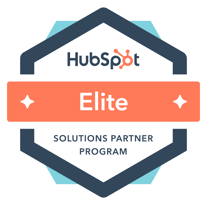 As we mentioned above, there are thousands of marketing technology tools. At Concentrate we originally used a ‘stack’ of tools, from Wordpress for websites to Mailchimp for email to Buffer for social media to Google Analytics for metrics. Eventually this become a cumbersome way to operate so chose HubSpot, as a platform that could offer all of the component parts.
As we mentioned above, there are thousands of marketing technology tools. At Concentrate we originally used a ‘stack’ of tools, from Wordpress for websites to Mailchimp for email to Buffer for social media to Google Analytics for metrics. Eventually this become a cumbersome way to operate so chose HubSpot, as a platform that could offer all of the component parts.
A platform approach enabled us to become more efficient at managing marketing activity, while getting more visibility to what was happening with our lead generation efforts.
Learn about more marketing technology stacks here.
How does content marketing help B2B lead generation?
The modern buyer has all the power. They can research all of the solutions to a problem they have, evaluate them and compare pricing before even talking to you. If you are not engaging them digitally, you are increasingly invisible, especially as a tech company.
The way to engage them is with content. That is, useful information that helps at different stages of their journey, from doing initial research right through to buying. By being genuinely helpful you can earn trust and generate qualified leads for your sales team.
By providing audience members with useful content to help them explore and clarify their business problems, show them how to effectively solve their pain points and challenges, and then get them interested in something you sell, you can increase conversions, improve brand awareness, boost revenue, and more. For tech companies especially, content marketing provides the opportunity to explain often complex solutions, and their benefits, to an audience in multiple ways.
Here are some starter ideas on content you can produce to drive your lead generation programme.
What types of content can I produce?
Buyers of technology solutions expect useful information to help them all the way along their buying journey, not just product data. Kiwi tech firms have embraced content marketing, with the majority doing some form of it.
The key questions to think about when producing content are:
- Who are you targeting for this particular content i.e. the buyer persona(s)?
- What sort of content do they prefer i.e. more analytical than emotional, what sort of design value, how in-depth, how complex?
- Where are they in the buying process i.e. someone doing early research has very different needs to someone who is just trying to understand your pricing model?
- Do you have useful insights to offer, or can you access thought leaders or unique data to generate these?
- Once built, how can you attract people to consume it?
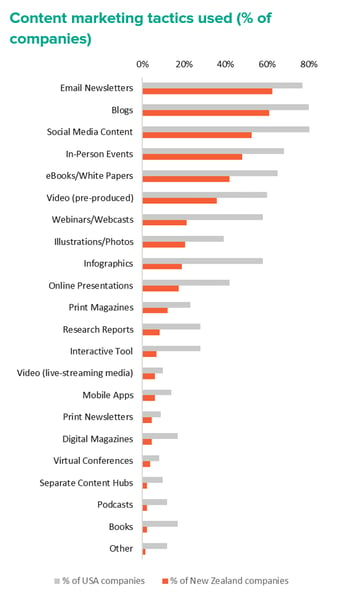
What digital tactics support B2B lead generation?
The best content in the world is useless if you no-one is viewing it. Quality content is key, but having a focussed programme to generate traffic is equally important.

SEO
Buyers need to be able to find your website, and particular your content landing pages, through search engines. Pillar pages like the one you're reading are increasingly key to SEO.

Social media
Firms can get over-focussed on social media, but promoting your content through LinkedIn, Facebook, Twitter, YouTube, Instagram and other channels can deliver quality leads.

Email marketing
Targeting buyers that have given you opt-in permission to contact them helps generate new leads and nurture existing ones along the buying process.

Paid search / Social
Buying some traffic to your content landing pages is a legitimate target, if managed and monitored carefully. From simple Google Ads through to remarketing tactics to LinkedIn promoted posts, there's a myriad of options for generating interest for your content.

Referral
Using highly trafficked sites in your target market, e.g. an industry association to post links to your website and its content is also a reliable way to direct the right people to your content.
How does my website support B2B lead generation?
A B2B tech website should be on average converting between 1-3% of its traffic to (raw) leads, with the best lead generators achieving a 4-5% conversion rate.
There are many ways you can make your B2B website more engaging, but these are the four fundamentals:
![]()
Clean, functional design focussed on user experience: a website must be of good quality, and consistent with your brand, but the most important aspect is how functional it is for the user.
Winning design awards for your website is irrelevant if you are not delivering qualified leads to sales.
![]()
User friendly CMS that marketing can drive: too often marketing doesn’t have enough control over their website.
Effective lead generating websites are live, dynamic platforms, constantly being updated with relevant information for buyers. If updating content is slow and difficult your effectiveness is highly restricted.
![]()
Regular blogging and content production schedule: according to HubSpot data, B2B companies that blogged 11+ times per month had almost three times more traffic than those blogging 0-1 times per month.
![]()
Review your metrics monthly: you can’t manage what you don’t measure.
Any B2B marketers must track some base information about your website – volume of traffic where it is coming from and how much is converting are three high level ones to start with. Bounce rates, time on page etc aren’t irrelevant but focus on the most important data points first. Here’s six you can track.
Can social media help with lead generation?
Is social media the most over-hyped tactic in the generally over-hyped history of marketing? Is all this tweeting, facebooking and linkedining as pointless as it sometimes seems?
Mostly yes, because too many firms look at social media in completely the wrong way. Social media works best when it is used to pull people in to listen to your company’s story, rather than treated as yet another channel to push your message on potential customers. Carefully used, social media channels should drive traffic to all the valuable content on your website, turning that interest into leads.
The other aspect to consider is that organic (i.e. non-paid) social media accounts for only about 5% of the average B2B website traffic. So while important, it’s not the core of your lead generation strategy.
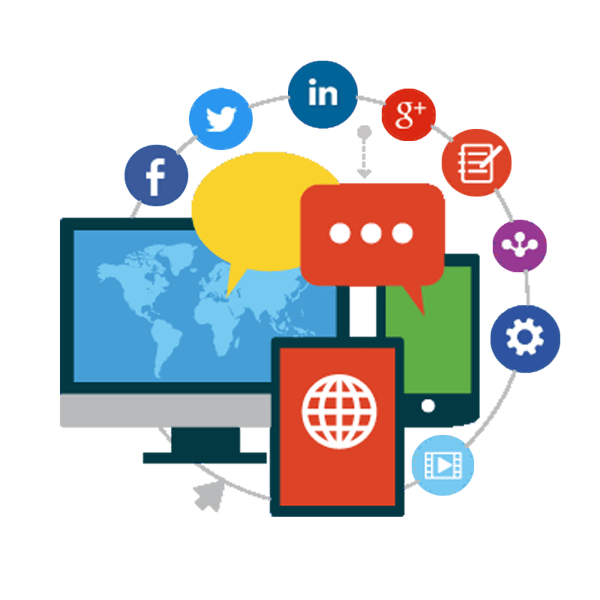
Twitter, Facebook, LinkedIn, Instagram, Youtube, Pinterest and the myriad of smaller niche social media channels are all potentially good channels for your lead generation. Different platforms work differently for different industries and personas. We’ve found Twitter great for communicating with Salesforce developers, LinkedIn brilliant for CXOs in a US-industry, and Pinterest useful for HR software promotion. The key is trying them and measuring the result.
Don’t forget, channels like LinkedIn can also be excellent tools in the sales process, once leads are generated.
Paid social media (e.g. boosting posts on Facebook, sponsored posts on LinkedIn) offers some exciting opportunities for hyper-targeted advertising spend.
Can I use Google Ads and other online advertising to generate leads?

Paid search and other online advertising channels are powerful lead generators, especially when you are trying to quickly build website traffic, or introduce a new product to a market.
Google offers a broad range of advertising options but need to be carefully targeted and closely managed to get good lead generation results. Niche online advertising, for example in an industry specific online magazine, can also be a cost-effective way of reaching new prospects and driving them back to content offers on your website.
What offline tactics work for B2B lead generation?
Offline lead generation tactics continue to play a key role in tech company lead generation. Trade shows alone represent on average 27% of tech company marketing spend. Other tactics such as direct ‘snail’ mail and telemarketing also offer value.
Key to leveraging offline tactics is ensuring they are aligned with your digital system. That is, any trade show activity should be about generating leads that go into your CRM for digital nurturing.
Here’s six ideas for running a great trade show.
Is outsourcing a good approach to B2B lead generation?
Driving lead generation internally can be an effective approach, but sometimes you are limited by size. Typically you will need skills across inbound marketing strategy, SEO and SEM, email marketing, content production, graphic design, social media, conversion rate optimization, event marketing, data and analytics.
You can either hire someone with specific skills, and then complement them with contracted resource, or consider options like a full-service agency that can deliver all the marketing ‘flavours’ you need.

For example, one year you may be refreshing your website design and structure so require SEO and design-savvy marketing roles, whereas the following year you may be looking to ramp up your content strategy with an eBook campaign so need excellent writers, and inbound marketing expertise.
Outsourcing your marketing to an agency is an alternative to hiring an in-house marketing role or roles. For the price of a mid-level employee, you get access to a ‘pick and mix’ of the marketing roles mentioned above, when you need them, as you need them.
How can I calculate ROI on B2B lead generation spending?
The beauty of the mostly digital act of lead generation is that it is very visible and measurable, but some tech companies don’t put in place the basic measures of success, or measure the wrong or inconsequential data points. These four basics are key to have in place as a start.
Once you have good measurement in place, you can start connecting lead generation activity to closed sales, and therefore assessing whether specific investments are paying off. You need an integrated marketing automation and CRM platform to do this without huge effort and complexity.
Kiwi tech firms need to be more focussed on measuring their lead gen, given only 15% of Kiwi tech companies put ‘proving the ROI of marketing activities’ as a top priority, compared to 42% in the US.

What are some tips for B2B lead generation?
Here’s 15 quick ideas for improving your B2B tech lead generation, in completely random order:
- Use pop-up conversion forms on relevant website pages. If a website visitor is viewing a certain product page, you could serve up a pop-up for a calculator to help them calculate ROI.
- Email marketing – it’s an old dog, but still a hardworking one. With a quality database and strong offer, you can generate plenty of sales opportunities using email.
- Blogging is key to improving your website traffic. You can’t blog too much, as long as its focussed on the search terms your prospects are using.
- Add a chat function, or chatbot, to high intent web pages like pricing information.
- Go retro, buy a target list and send them a snail mail with an offer to download some content on your website. Follow the letter (yes letter) up with a quick call to seek opt-in permission to send them an email follow-up with the content offer.
- 95% of visitors to your website aren’t ready to convert on a contact-us form. Add Call-to-action (CTAs) buttons throughout your website giving website visitors lots of opportunities to engage and convert, no matter where they are in their buying process (e.g. download eBook, talk to sales, calculate ROI, free assessment, request a consultation, subscribe now, register for the webinar).
- At the end of a conference presentation, have a slide making an offer using a short URL that your audience can access and download something of value.
- Include a ‘negative persona’ i.e. someone you don’t want to sell to, in your contact groupings. You can use it to 'park' contacts that have converted on forms throughout your website, and you don't want to include in lead nurturing activities. For example, students, competitors, Government Agencies, your Mum etc.
- Run a webinar on a high pain point subject for your target audience. Promote it aggressively through all of your channels, and then once completed push out the recording for download on all those same channels.
- Run a highly targeted lead gen advert on LinkedIn, using a specific content offer. Cost per click can be high, but quality is often excellent.
- Produce video (educational, instructional or interview) and push through your website, social media and other channels. Convert them into the podcast too.
- Paid media (e.g. Google Ads) is a quick way to generate leads. Trial ads with a small budget and then double down on the search terms and ads that work best.
- Send out a monthly email newsletter linking back to key updates on your website, including a landing page with an offer to convert on something like an eBook.
- Find Facebook groups relevant to your sector and become a regular contributor. Once your authority is established, point members to genuinely useful resources on your website.
- Run a joint promotion with a reseller partner with a dedicated landing page.
You may also like

Ask Achan: Best practices for key account management within Hubspot

Ask Achan: What tools have you successfully integrated with HubSpot?


